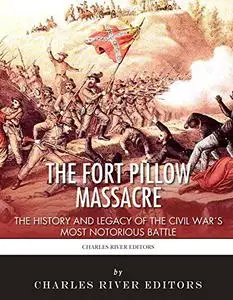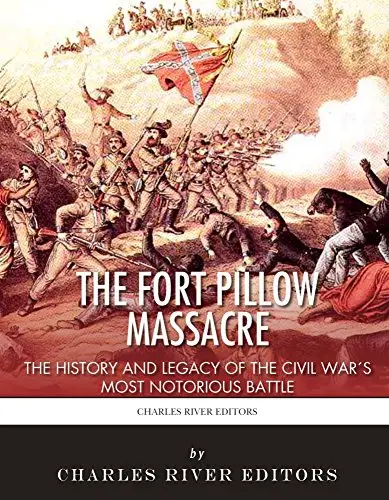The Fort Pillow Massacre: The History and Legacy of the Civil War’s Most Notorious Battle by Charles River Editors
English | March 15, 2015 | ISBN: 1508864837 | 56 pages | EPUB | 0.75 Mb
English | March 15, 2015 | ISBN: 1508864837 | 56 pages | EPUB | 0.75 Mb
*Includes pictures *Includes accounts of the battle made by participants *Includes testimony taken by Congress of Union soldiers after the battle *Includes online resources and a bibliography for further reading *Includes a table of contents “I found many of the dead lying close along by the water's edge, where they had evidently sought safety; they could not offer any resistance from the places where they were, in holes and cavilles along the banks; most of them had two wounds. I saw several colored soldiers of the Sixth United States Artillery, with their eyes punched out with bayonets; many of them were shot twice and bayonetted also. All those along the bank of the river were colored. The number of the colored near the river was about seventy. Going up into the fort, I saw there bodies partially consumed by fire. Whether burned before or after death I cannot say, any way there were several companies of rebels in the fort while these bodies were burning, and they could have pulled them out of the fire had they chosen to do so.” – Robert S. Critchell, a naval officer during the Civil War At the end of 1863, Confederate cavalry leader Nathan Bedford Forrest began operations in west Tennessee with a small unit, but he managed to recruit several thousand volunteers, including a number of veteran soldiers, and he whipped them into shape so that they were combat ready before their first confrontation. Upon hearing of Forrest’s growing aptitude for adaptive warfare, General Sherman wrote to Union Commander-in-Chief Henry Halleck that men like Forrest are “men that must all be killed or employed by us before we can hope for peace. They have no property or future, and therefore cannot be influenced by anything except personal considerations.” Sherman repeatedly ordered his Memphis commanders to catch “that devil Forrest,” essentially putting a bounty on his head. Forrest already had a controversial Civil War record entering 1864, but he was about to participate in perhaps the most controversial battle of the war. After functioning as an independent raider for several months, on April 12, 1864, units of Forrest’s cavalry surrounded Fort Pillow on the Mississippi River, north of Memphis. Ironically, the fort had been built in 1861 and named after General Gideon Pillow, the same General Pillow who proved wildly incompetent at Fort Donelson and ignored Forrest’s suggestion to escape the siege instead of surrendering to Grant. As far as skirmishes go, Fort Pillow was a completely unremarkable fight. Before attacking, Forrest demanded the unconditional surrender of the Union garrison, a normal custom of his, and he warned the Union commanding officer that he would not be responsible for his soldiers’ actions if the warning went unheeded. What made Fort Pillow markedly different was that a sizable amount of the Union garrison defending the Fort was comprised of black soldiers, which particularly enraged Confederate soldiers whenever they encountered those they viewed as former slaves in the field. It is still unclear exactly how the fighting unfolded, but what is clear is that an unusually high percentage of Union soldiers were killed, and the Confederates were accused of massacring black soldiers after they had surrendered. Primary sources tell conflicting accounts of what happened at Battle of Fort Pillow, leaving scholars to piece together the battle and determine whether Confederate soldiers purposely shot Union soldiers after they had surrendered. The Fort Pillow Massacre: The History and Legacy of the Civil War’s Most Notorious Battle chronicles the history of the Civil War’s most infamous massacre. Along with pictures of important people, places, and events, you will learn about Fort Pillow like never before, in no time at all.
Feel Free to contact me for book requests, informations or feedbacks.
Without You And Your Support We Can’t Continue
Thanks For Buying Premium From My Links For Support
Without You And Your Support We Can’t Continue
Thanks For Buying Premium From My Links For Support



